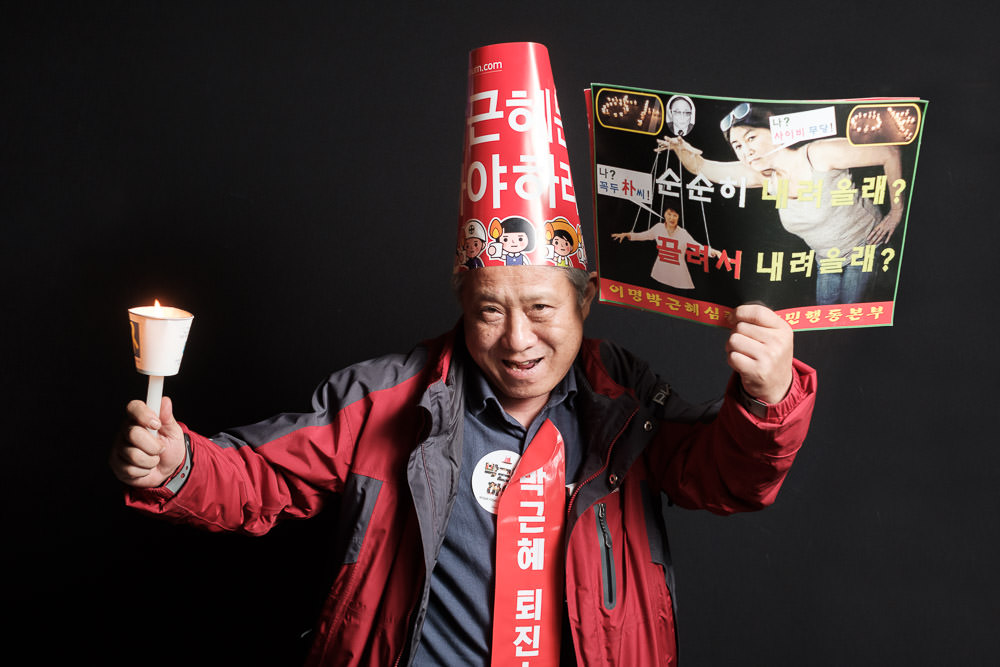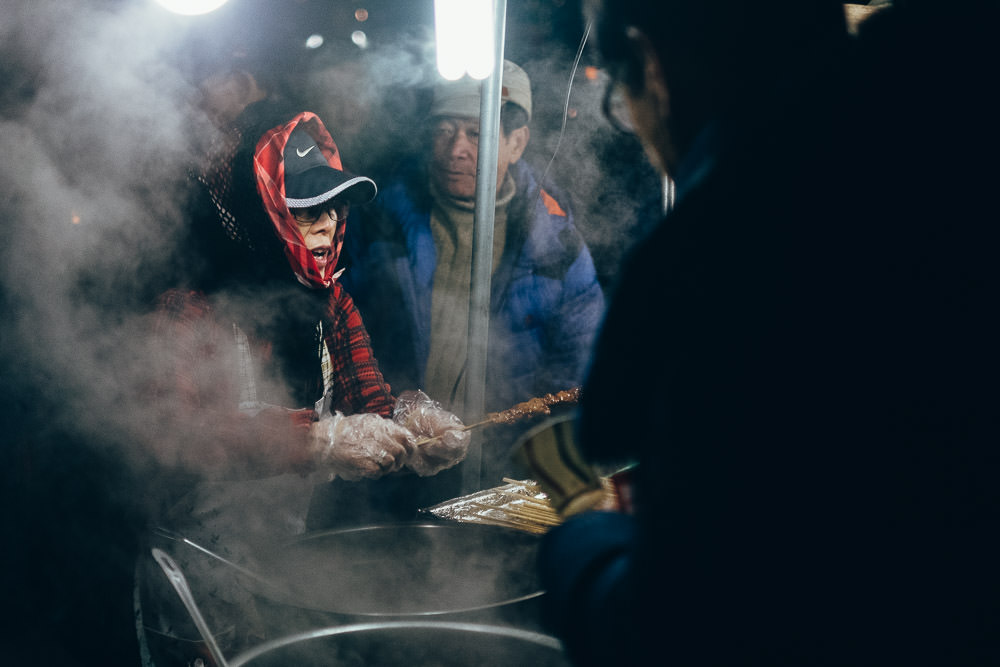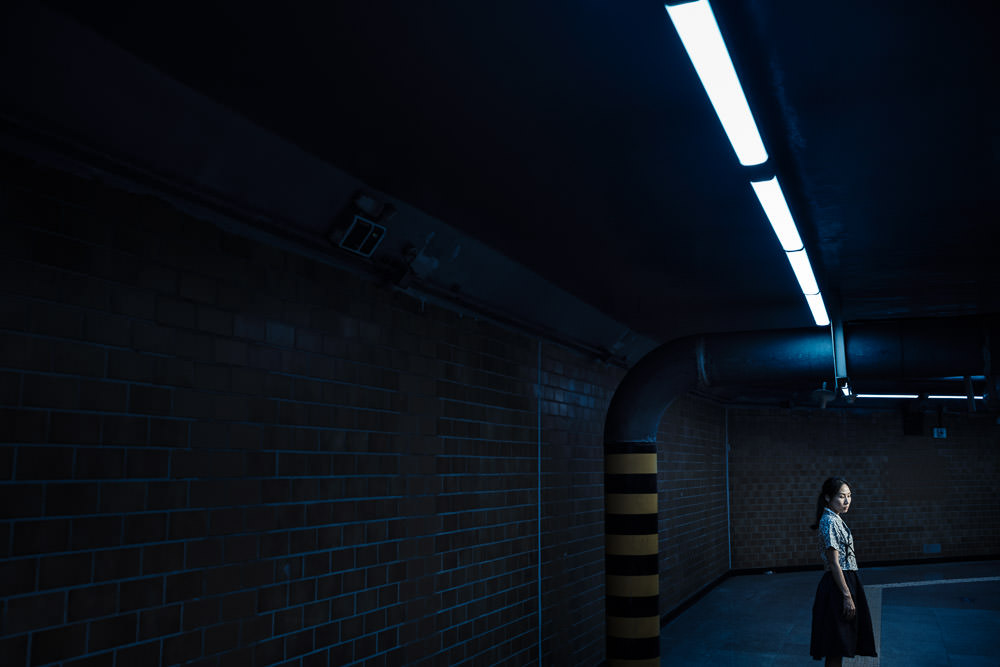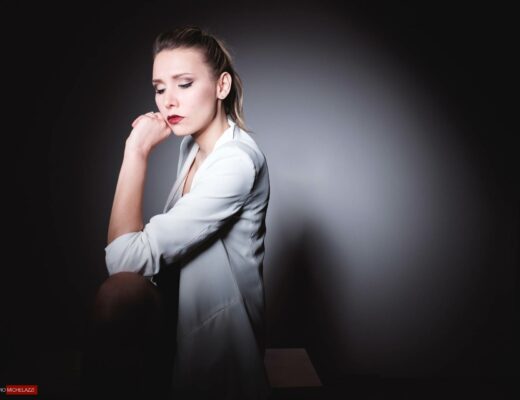Focusing in the dark is difficult with any camera system, but can be particularly challenging with mirrorless systems. Low light can mean that contrast is low, the subject you want to focus on is too dim for the camera to recognise, or that there isn’t even enough light for your eyes to see. These are all challenging situations for your camera to focus. Today, we’ll take a look at a few techniques you can use to focus in the dark.
Camera autofocus systems need light, or more specifically, contrast with which to focus. As light fades you lose both of these and most autofocus systems begin to struggle. In order to allow the camera to focus again, we need to reintroduce one or both of these things. Let’s take a look at a few ways we can do that. Some of these are functions of the camera or a flash unit and some of them we can look for in the world.
The AF Illuminator
Most of the Fujifilm bodies have an AF Illuminator (a small light that illuminates subjects close at hand when there is not enough light for the AF system to function efficiently) and if yours doesn’t, flash units are available with these same AF assistance lamps built in.
This is by far my least favourite way to focus as I’m primarily a portrait photographer and these lamps can be blinding to my subject in dimly lit situations. In a pinch, however, subjects within a couple of metres of the camera will receive enough illumination to allow the AF system to function. This function can be turned on and off in your camera’s AF/MF menu.

The AF Illumination Lamp allowed me to get a series of portraits of the anti President Park protestors in Korea.
Your Phone
The flashlight function in your phone can be used to the same effect as the AF lamp. I will often use this when I’m shooting with flash at the fringes of day. I will have my assistant side light my subject so that I can focus and then point the light away while I make my exposure.
Lighting from the side of the subject provides a high contrast light that makes it easy for the camera to focus quickly and accurately. Doing this between frames means that I’m able to refocus and ensure that my subject stays in focus from frame to frame.
If you’re photographing a person and the camera is not mounted on a tripod, you’ll want to have the process of lighting, focusing, and shooting move quite quickly so as to minimise movement from either you or your subject that will result in an out of focus frame. Fixing the camera on a tripod and having the subject lean or sit can minimise these movements a well.
A High Contrast Edge
If your subject is low contrast and the camera will not focus on it, you can find a high contrast edge at the same or similar distance in order to have the autofocus system work accurately. I use this quite frequently when photographing backlit scenes or dark scenes at corporate functions or weddings.
Often a black jacket against a white shirt provides enough contrast even in the lowest light to focus and make at exposure. Be aware of your aperture when photographing using this technique. Wide open apertures like f/1.4 or f/2 result in a shallow depth of field so you will need to find this high contrast edge at the exact same distance as the subject you wish to be in focus.
Manual Focus with Peaking
Sometimes, your camera may not have enough light to autofocus, but the focus peaking function may be able to pick out the edge you are trying to focus on. Switch the camera to manual focus and turn on focus peaking in the AF/MF menu.
When I work at night I tend to turn the camera to the split screen mode. This means I can get a 100% preview of the area where my focus point is. The focus peaking shows up in this preview as well. This makes it quite easy to focus manually in dark conditions.
Modeling Light
If you’re working with bigger lights off camera, they may have a modeling light built in. These serve two purposes in dark environments. Firstly, they allow you to see your subject and how the light will fall on them. Secondly, they allow you to focus easily. If your strobes are on mains power, switch the modeling light on and leave it on. With battery powered strobes, you’ll want to use the modeling light sparingly as it will chew through your battery very quickly.
Speed over Critical Focus
If you can take the chance not to have critical focus and just need a workable shot, the Area AF mode can work quite well. This gives the camera a few more points to look at and speeds up overall AF, even in the dark.
These are five simple methods I use to help the camera out when it comes to focusing in the dark. How about you? What methods do you use to focus in situations when the autofocus system cannot cope? Do you have any other tips and tricks you can share with us here?






















